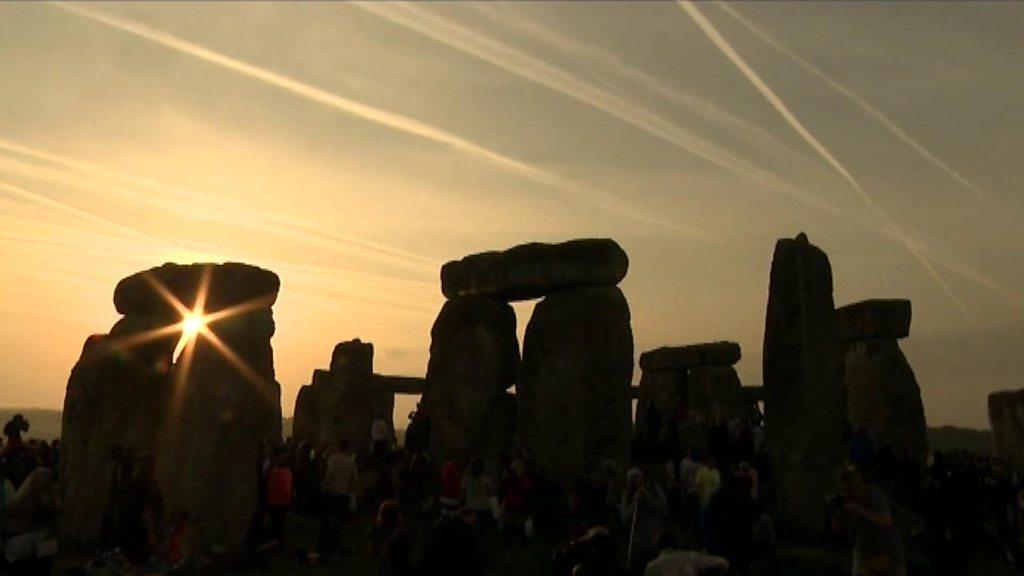Building Stonehenge 'may have been ceremonial celebration'
- Published

Celebrating the building of Stonehenge may have been as important to Neolithic people as worshipping there
The arduous task of building Stonehenge may have been part of a ceremonial celebration, claim historians.
The circle in Wiltshire was built more than 4,000 years ago using bluestones from south Wales - a decision which has long baffled experts.
Susan Greaney, from English Heritage, said they now believed that Neolithic people did not want to make "things as easy and quick as possible".
Building the monument was as important as "its final intended use," she added.
Experts have tried to discover why the people who built Stonehenge chose to use some stones from the Preseli Hills, about 155 miles (250km) away.
The stones were probably transported via water networks and hauled over land, using a huge amount of labour over the long and difficult journey.
Experts now believe the construction of the monument was just as important to Neolithic people as worshipping in it.
"In contemporary Western culture, we are always striving to make things as easy and quick as possible, but we believe that for the builders of Stonehenge this may not have been the case," said Ms Greaney.
English Heritage also thinks people may have gone on a kind of celebration pilgrimage to help construct the monument.
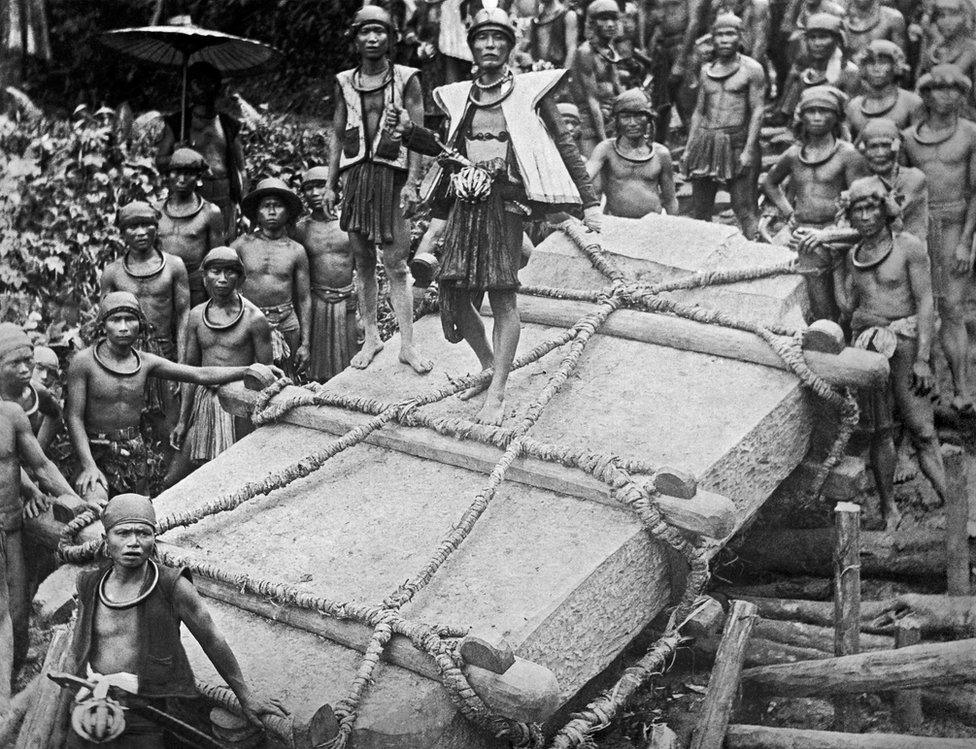
A photo of a stone-pulling ceremony on Nias in Indonesia in 1915 show people celebrating the move
The new theory follows the discovery of a feasting site at nearby Durrington Walls settlement, which attracted people from all over the country to help build Stonehenge.
Historians think holding ceremonial feasts close to the Stonehenge site to celebrate the build "was potentially a powerful tool in demonstrating the strength of the community to outsiders".
English Heritage believe this theory is backed up by a photograph taken during a stone-pulling ceremony on the island of Nias, Indonesia, in 1915.
It shows people in ceremonial dress "revelling in the seemingly arduous task of moving enormous monoliths by hand, taking part in feasts and associated dances".
Ms Greaney added: "As soon as you abandon modern preconceptions which assume Neolithic people would have sought the most efficient way of building Stonehenge, questions like why the bluestones were brought from so far away - the Preseli Hills of south Wales - don't seem quite so perplexing."
In order to test the celebration theory, English Heritage will begin moving a replica stone on Friday using teams of volunteers in an "experiential archaeology" project.
In a statement it said the aim was to see how Neolithic people may have cooperated to build the monument and suggests "visitors abandon 21st-century thinking to understand how the monument was built".

Stonehenge
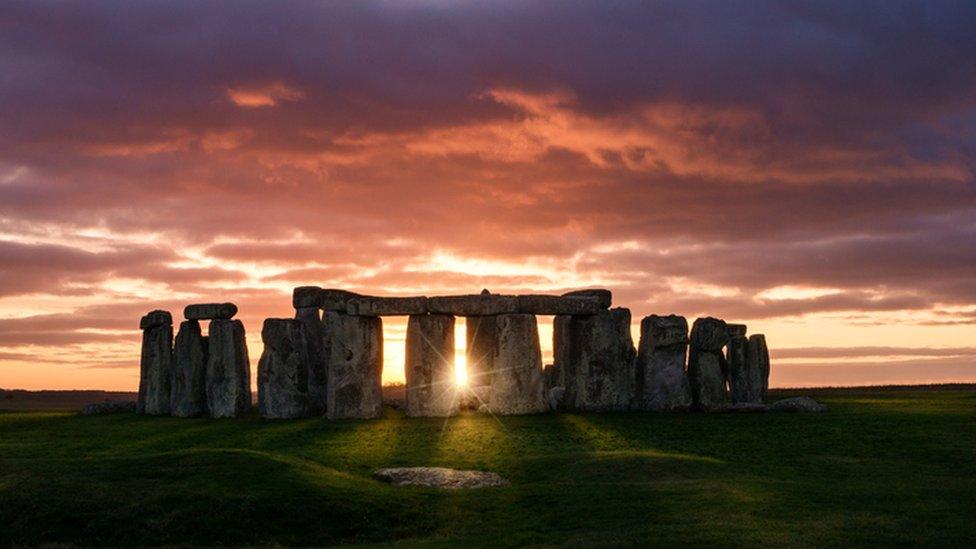
The first monument at Stonehenge was a circular earthwork enclosure with a ring of 56 timber or stone posts, built in about 3000BC.
This was replaced in about 2500BC with sarsen stones and smaller bluestones.
Most archaeologists believe the sarsen stones were brought from the Marlborough Downs, 20 miles (32km) away. The sarsens weigh on average 25 tonnes, with the largest stone, the Heel Stone, weighing about 30 tonnes.
The smaller bluestone came from the Preseli Hills, 155 miles (250km) away in south-west Wales. The stones, which weigh between two and five tonnes each, were probably carried via water networks and hauled over land.
Source: English Heritage

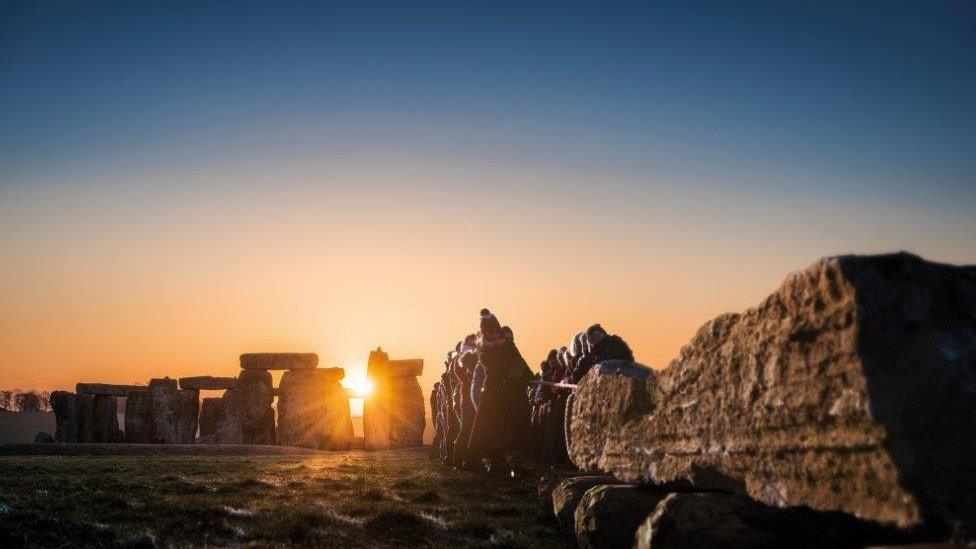
English Heritage will begin moving a replica stone on Friday using teams of volunteers in an "experiential archaeology" project
- Published21 December 2017
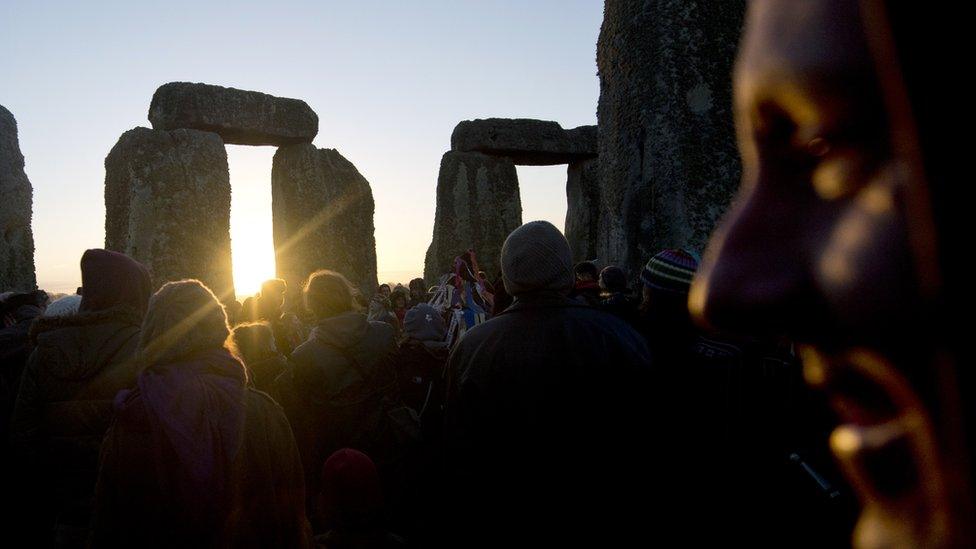
- Published21 June 2017
